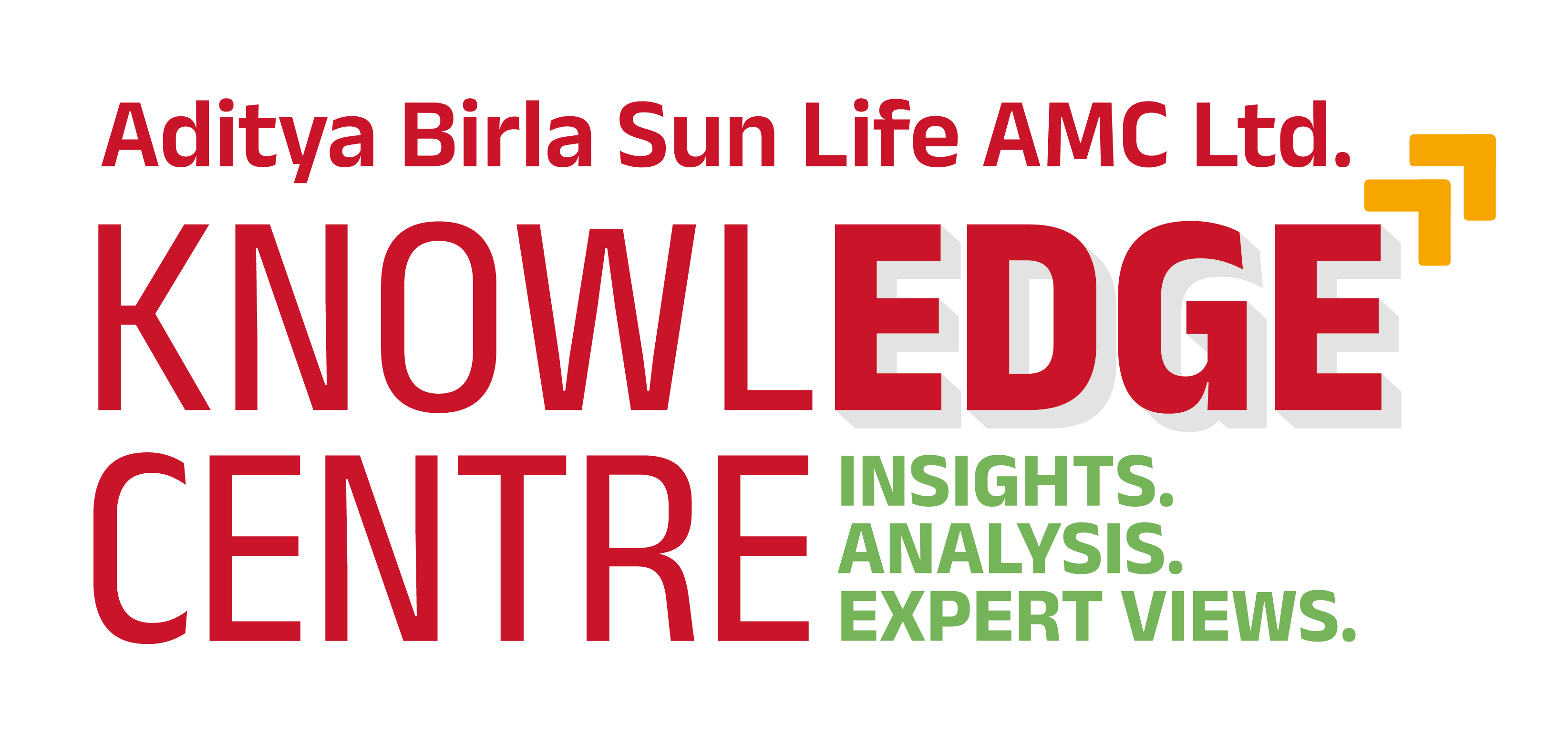-
Our Products
Our FundsFocus Funds
-
Self Care
Self-ServiceFind InformationWays To TransactPartner Solutions
-
Downloads
- Learnings
- About Us
-
More
-
Shareholders
-
Shareholders
-
Updates
-
-
SIP Calculators
- Back
-
Shareholders
India’s Economic Rise: Tapping Into the $10 Trillion Growth Opportunity

Apr 08, 2024
5 Mins Read
Listen to Article
India has emerged as the fastest-growing major economy in the world. The Indian economy grew 8.4% in Q3FY24 and is expected to retain the top spot in 2024. The country’s economic growth rate for the financial year 2023-24 is now estimated at a robust 7.6%. According to the report of the Centre for Economics and Business Research (CEBR), India will become a $ 10 trillion economy by 2035.
From the PLI scheme to the Insolvency and Bankruptcy Code, India has seen many important policy reforms that have improved productivity. The call of Aatmanirbhar Bharat as well as Make in India have created a renewed wave of manufacturing in the country. India has also envisaged an infrastructure revolution of sorts by building modern infrastructure that can match the requirements of a developed country. An advanced economy, which it foresees to be one, needs a strong network of roads, railways, ports, and airports, among others. Initiatives such as PM Gati Shakti lay down the vision of a new India. The government’s capital expenditure increased from ₹ 7.28 lakh crore in the last year to ₹ 10 lakh crore in the 2023 budget, with almost half of the spending allocated for railways and roads. In the interim budget announcement, the Finance Minister underscored the huge multiplier impact on the economic growth and employment creation, while increasing the outlay for the next year by another 11.1%. As we move forward, energy security to fire up this growth is essential and India’s renewable energy sector has progressed well to support this, as has its diplomatic prudence during times of crisis.
The Indian markets reached a significant milestone of equity market capitalisation exceeding $4 trillion. Benchmark stock market indices have been hitting fresh record highs. India added more than $900 billion in market cap in 2023 and has been rising through the ranks among the world’s largest markets in market capitalisation. Sound macroeconomic fundamentals and robust growth of the economy have led to foreign institutional investors (FIIs) making a strong comeback in Indian markets. I read in a media report that in just one year, the number of billion-dollar listed firms on the BSE has surged from 392 to 504, an impressive increase of 112. This marks the most substantial rise in the last decade. This has been further aided by the surge in IPO activity that has seen record participation from retail investors. Domestic flows have held fort during times of FII’s selling and one has to give credit to the domestic mutual funds industry in inculcating an investing habit among Indians and channelling household savings to capital markets. We are honoured to have the opportunity to be an integral part of this growth and in meeting the evolving needs of our expanding customer base through the right products and by promoting financial awareness and inclusion.
The more the merrier is one phrase that is likely to come true with the unleashing of India’s economic potential due to its large and favourably aged population – popularly referred to as a demographic dividend. In 2023, the population count in India has gone past China, making it the most populous country on the planet. But more than being a challenge, India’s young working population could lead to a new consumption boom that is likely to last multiple decades, more so in the next 10 years. The country’s Gen Z and millennials account for 50% of the total population and are focused on lifestyle spending. A young working population, higher per capita GDP (and disposable income) that increases the propensity to spend, rapid urbanization, the nuclearization of families and rising awareness, as well as aspiration levels fuelled by social media, are set to take consumption to the next level in India.
The International Monetary Fund (IMF) called India’s Direct Benefit Transfer (DBT) scheme a ‘logistical marvel’. India has masterfully used technology as a public good by leveraging the JAM trinity (Jan Dhan, Aadhar and Mobile) and has used it to reach various government schemes to the last mile. Not only that, but this tech revolution has also transformed the way India does business and how people interact with money. This has also aggressively pushed the adoption of digital payments in the country. As per a recent report by Redseer in collaboration with Mr. Nandan Nilekani, India’s current digital public infrastructure (DPI) landscape has provided 97% of the population with a digital ID, facilitating direct benefit transfer (DBT) to the effect of 900 million beneficiaries till date and has even given 40% of the 1.2 billion population access to banking facilities.
In recent years, there has been an unprecedented surge in digital payment transactions. The adoption of user-friendly and convenient digital payment methods, including Bharat Interface for Money-Unified Payments Interface (BHIM-UPI), Immediate Payment Service (IMPS), pre-paid payment instruments (PPIs) and the National Electronic Toll Collection (NETC) system, has experienced significant growth. These methods have not only reshaped the digital payment landscape but have also boosted both Person-to-Person (P2P) and Person-to-Merchant (P2M) transactions. Simultaneously, traditional payment channels like debit cards, credit cards, National Electronic Funds Transfer (NEFT) and Real-Time Gross Settlement (RTGS) have also seen rapid expansion. UPI hailed as a groundbreaking solution in the payment ecosystem, has become the preferred choice for users, playing a pivotal role in cultivating a habit of digital payments and propelling India towards a cashless economy.
Sources: National Statistical Office (NSO), S&P Global Ratings, Reserve Bank of India, Press Information Bureau of India, Ministry of Finance, Invest India, ABSLAMC Research, Hindu Business Line, Economic Times, Financial Express. The views expressed in this article are for information purpose only and is not a recommendation, offer or solicitation of business or to buy or sell any securities or to adopt any investment strategy. Aditya Birla Sun Life AMC Limited (“ABSLAMC”) /Aditya Birla Sun Life Mutual Fund (“the Fund”) is not guaranteeing/offering/communicating any indicative yield/returns on investments. The sector(s)/stock(s)/issuer(s) mentioned do not constitute any research report/recommendation of the same and the Fund may or may not have any future position in these sector(s)/stock(s)/issuer(s). Views expressed herein should not be construed as investment advice. Mutual Fund investments are subject to market risks, read all scheme related documents carefully.
India’s resilient march has continued on the back of strong domestic demand despite global macro uncertainties. A steady focus on macro stability and sustainable fundamental growth has ensured that the Indian economy remains robust in an uncertain global environment that has been marked by geopolitical tensions, inflationary pressure, and tight liquidity conditions. The global environment is also something that the Reserve Bank of India (RBI) is closely monitoring. Despite the concerns around global risks, India’s strong structural drivers are expected to keep sentiments upbeat.
At Aditya Birla Sun Life AMC Limited, we complete our 30th year in business, and I must say that we have been fortunate to see India’s trajectory closely as a market participant, having interacted with policymakers and management teams of different companies to understand the changes underway in the country. I thought of highlighting four key factors that to my mind are catapulting India to its next level.
Strong reforms and fiscal discipline
The simplification of indirect taxes in India in the form of a single tax, namely, the Goods and Services Tax (GST) has been a game changer. It has streamlined a fragmented indirect tax system and reduced the compliance burden for industries. GST collections touched ₹ 1.78 lakh crore in March 2024. More importantly, the intersection of policy and technology has powered efficiencies manifold in the country. Decisive reforms, strong tax collections, and healthy forex reserves, among others have ensured that fiscal prudence is maintained.
A robust capital market
A consumption boom driven by favourable demography
Digital Transformation
These four factors, in my view, are the pillars on which the India story stands tall and stands firmly.
Understanding the real India requires immersing oneself in its diversity, engaging with its enterprising communities, and witnessing firsthand the transformative power of grassroots innovation. We recently launched a new initiative – the Bharat Series, that seeks to unveil the rich tapestry of opportunities that Bharat presents, recognizing that India’s growth is also deeply rooted in rural. The impact of the four factors mentioned above was visible during our visit to rural India and has been chronicled in the series.
You can scan the QR Code to catch the series.

You May Also Like
Loading...





 1800-270-7000
1800-270-7000









